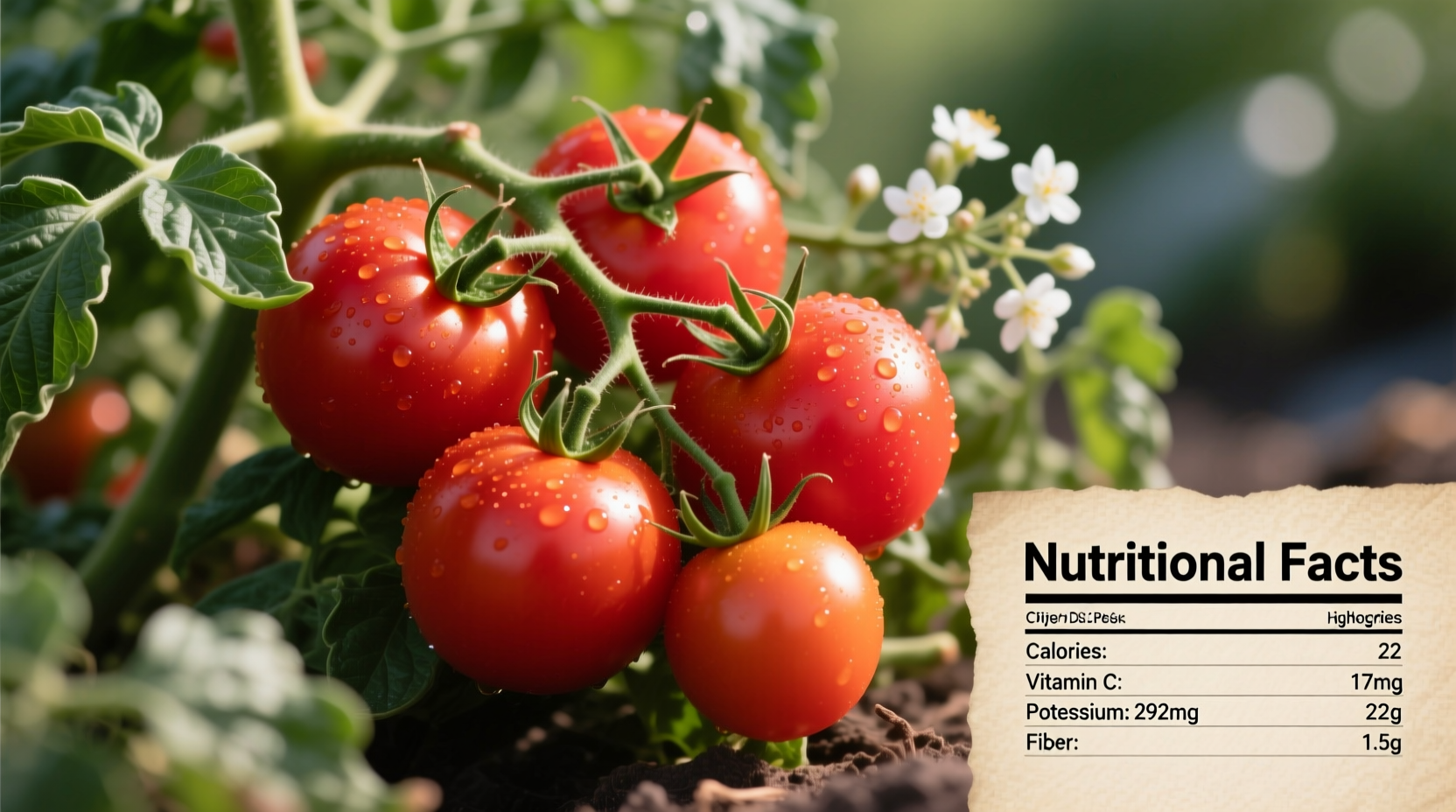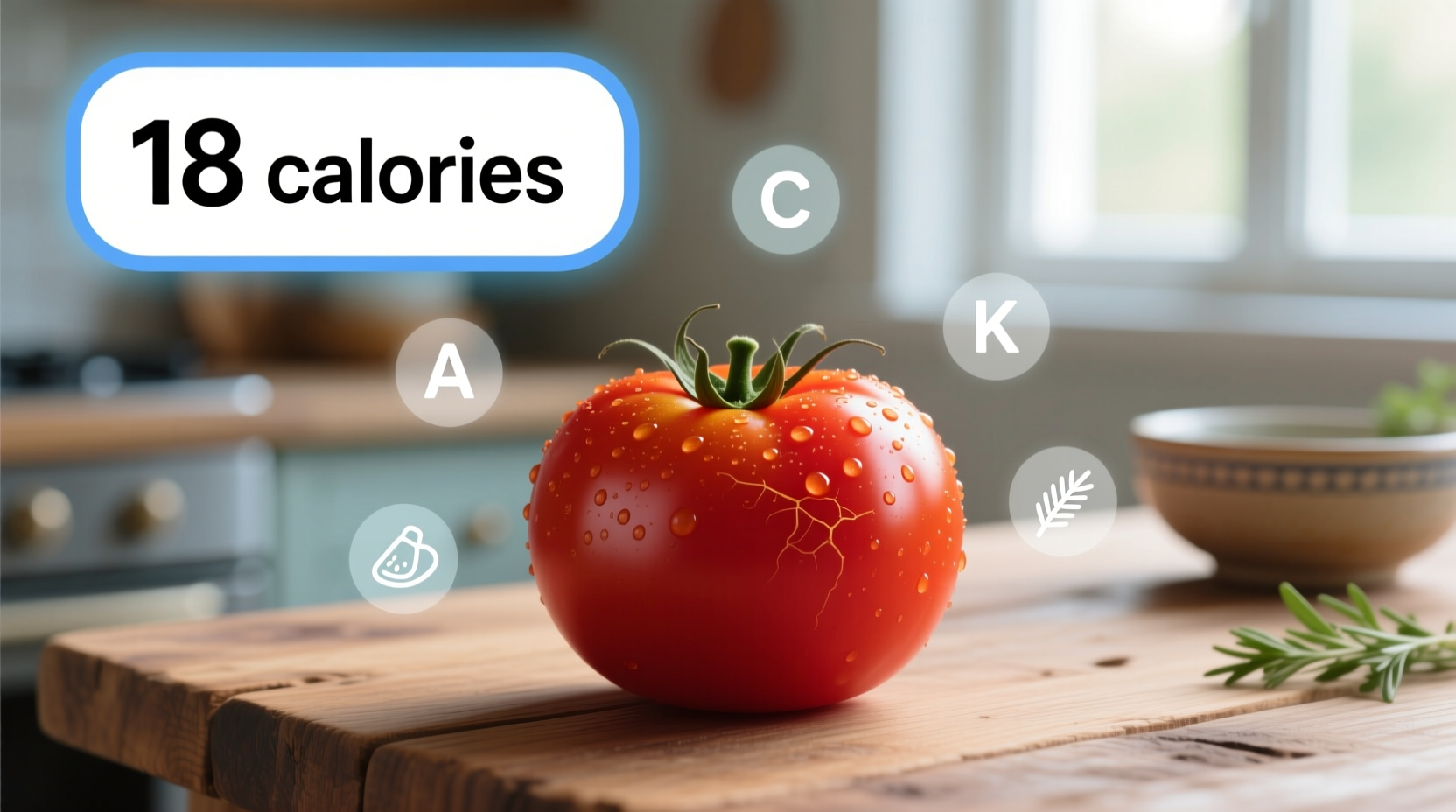When tracking your daily calorie intake, understanding the precise nutritional value of common foods like tomatoes is essential. This comprehensive guide delivers verified tomato calorie information from authoritative nutrition sources, helping you make informed dietary choices without unnecessary filler or speculation.
Tomato Nutrition: The Complete Calorie Breakdown
Tomatoes rank among the most nutrient-dense vegetables you can add to your diet. According to the USDA FoodData Central, the calorie content varies slightly based on size and preparation method, but remains remarkably low across all varieties.
| Tomato Type | Weight | Calories | Carbohydrates | Water Content |
|---|---|---|---|---|
| Medium raw tomato | 123g | 22 | 4.8g | 94.5% |
| Cherry tomatoes (10 pieces) | 100g | 18 | 3.9g | 94.9% |
| Roma tomato | 62g | 11 | 2.4g | 94.7% |
| Cooked tomato (canned) | 100g | 27 | 6.0g | 93.3% |
The minimal calorie count makes tomatoes an excellent choice for weight management. Unlike many low-calorie foods, tomatoes deliver substantial nutritional value beyond just being low in energy density. A single medium tomato provides approximately 28% of your daily vitamin C requirement and 10% of your vitamin A needs.

Factors That Influence Tomato Calorie Content
Several variables affect the precise calorie count in tomatoes, though the differences remain minimal:
- Variety differences - While most common varieties have similar nutritional profiles, heirloom tomatoes may contain slightly more natural sugars
- Ripeness level - Fully ripe tomatoes contain marginally more carbohydrates (and thus calories) than underripe ones
- Preparation methods - Raw tomatoes maintain their lowest calorie profile, while cooking with oils or sugars increases the calorie count significantly
- Added ingredients - Tomato sauces, salsas, and other preparations vary widely based on additional components
Tomatoes in Weight Management and Healthy Eating
Nutrition researchers at the Harvard T.H. Chan School of Public Health consistently rank tomatoes as one of the most beneficial vegetables for weight management due to their extremely low energy density. The high water and fiber content creates satiety while contributing minimal calories.
For those following specific dietary approaches:
- Keto diets - Tomatoes fit within keto parameters (4.8g net carbs per medium tomato)
- Mediterranean diets - Tomatoes serve as a foundational ingredient with minimal impact on daily calorie goals
- Diabetes management - The low glycemic load (3) makes tomatoes suitable for blood sugar control
Common Misconceptions About Tomato Calories
Despite their straightforward nutritional profile, several myths persist about tomato calories:
- "All tomato products have the same calorie count" - Processed tomato products vary dramatically; tomato paste contains about 82 calories per 100g while ketchup has approximately 110 calories due to added sugars
- "Organic tomatoes have fewer calories" - Organic certification affects farming methods but not the fundamental nutritional composition
- "Tomatoes lose all nutritional value when cooked" - While vitamin C decreases slightly with cooking, lycopene (a powerful antioxidant) becomes more bioavailable
Practical Applications for Daily Nutrition Tracking
When incorporating tomatoes into your meal planning:
- Track raw tomatoes by weight for the most accurate calorie counting
- Remember that one cup of cherry tomatoes (about 15 pieces) equals approximately 27 calories
- Be mindful of preparation methods - a tomato salad with oil-based dressing can increase calories significantly
- Use tomatoes as a volume-boosting ingredient in meals to increase satisfaction without adding substantial calories
Registered dietitians frequently recommend including tomatoes in weight loss plans precisely because they deliver flavor, texture, and nutrition with minimal caloric impact. The National Institutes of Health notes that populations with higher tomato consumption show better adherence to healthy eating patterns, partly due to their versatility and low-calorie nature.











 浙公网安备
33010002000092号
浙公网安备
33010002000092号 浙B2-20120091-4
浙B2-20120091-4